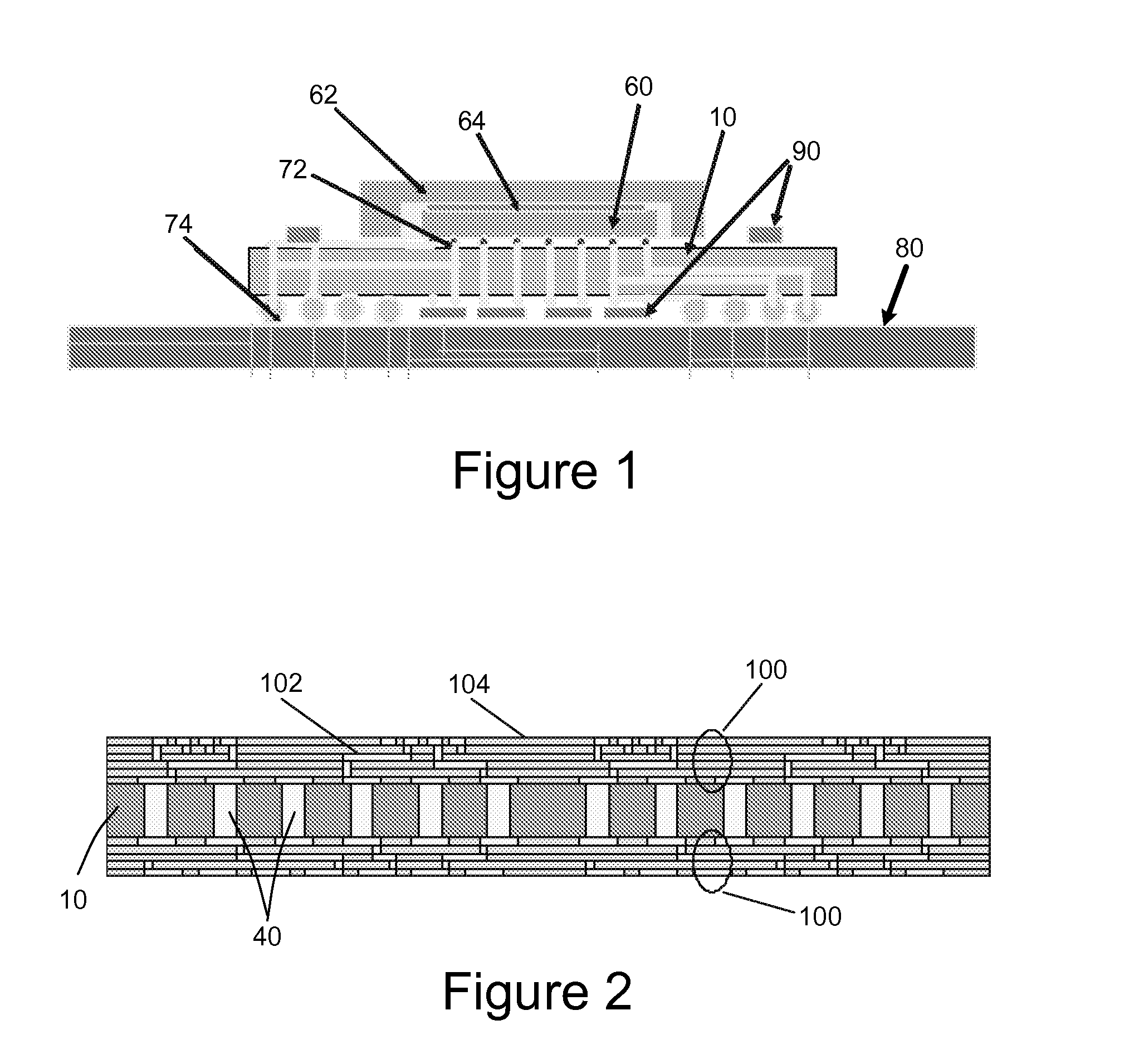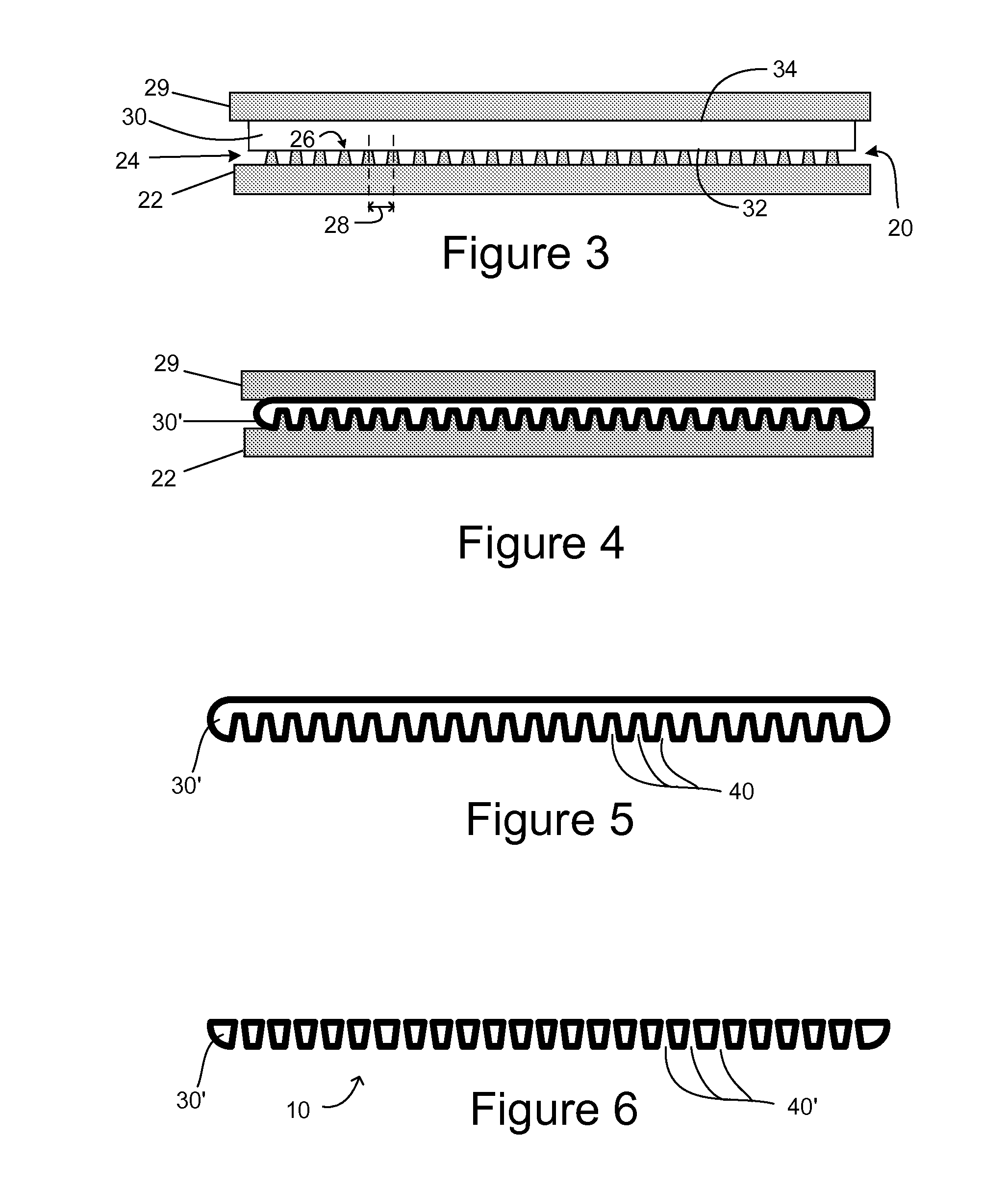Methods of forming a glass wiring board substrate
- Summary
- Abstract
- Description
- Claims
- Application Information
AI Technical Summary
Benefits of technology
Problems solved by technology
Method used
Image
Examples
examples
[0026]For Corning Code 0211 glass (available from Corning Incorporated of Corning, N.Y., USA and / or their distributors) a desirable graphite material may be EDM4 (available from Poco Graphite, Inc., Decatur, Tex., USA or their distributors) having a CTE of 78×10−7 / ° C. Mold surfaces comprising EDM4 were used to press Corning Code 0211 glass at 740° C. in a nitrogen atmosphere.
[0027]For actual production molds, diamond-tool machining is the preferred method for their formation. For the testing reported here, an EDM4 graphite mold was machined by wire EDM to produce 10 000 pins on 40×40 mm molding surface, the pins having a mean pitch 400 μm, a mean height of 230 μm, and a diameter at the bottom of the pins of 250 μm and 150 μm at the top. This mold was then used to press a sheet of Corning Code 0211 glass at 740° C. in a nitrogen atmosphere.
[0028]For back polishing, the molded glass was secured on a polishing support with adhesive wax melted at 70° C., then ground and polished to the...
PUM
| Property | Measurement | Unit |
|---|---|---|
| Length | aaaaa | aaaaa |
| Length | aaaaa | aaaaa |
| Moldable | aaaaa | aaaaa |
Abstract
Description
Claims
Application Information
 Login to View More
Login to View More - R&D
- Intellectual Property
- Life Sciences
- Materials
- Tech Scout
- Unparalleled Data Quality
- Higher Quality Content
- 60% Fewer Hallucinations
Browse by: Latest US Patents, China's latest patents, Technical Efficacy Thesaurus, Application Domain, Technology Topic, Popular Technical Reports.
© 2025 PatSnap. All rights reserved.Legal|Privacy policy|Modern Slavery Act Transparency Statement|Sitemap|About US| Contact US: help@patsnap.com



